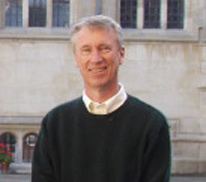 | ||
Robert Graham Hamish Robertson (born 3 October 1943 in Ottawa) is a Canadian experimental physicist. He is the Boeing Distinguished Professor for physics at the University of Washington and director of the University of Washington's Center for Experimental Nuclear Physics and Astrophysics. His specialty is neutrino physics.
Contents
Education and career
Robertson attended elementary and secondary school in Canada and England and then received from Oxford University in 1965 his bachelor's degree and in 1969 his master's degree. He received in 1971 from McMaster University his Ph.D under R. G. Summers-Gill with thesis Properties of the odd-odd cobalt nuclei. At Michigan State University he worked at the Cyclotron Laboratory and was in 1971–1972 a postdoc, in 1972–1973 an assistant professor, in 1973–1981 an associate professor, and in 1981–1983 a full professor of nuclear physics.
His research at Michigan State resulted in the first observation of an isobaric quintet states in nuclei. In addition, he carried out experiments on parity violation, nuclear astrophysics and nuclear reactions. A long-standing question as to whether 6Li is mainly primordial or a relatively recent product of astrophysical processes was settled in favor of the latter by a sensitive measurement of the capture of deuterium by helium-4.
At Los Alamos National Laboratory he was in 1981–1988 a Staff Member and in 1988–1994 a Fellow. At Los Alamos, he worked on neutrino mass determination by studying tritium decay and showed that electron neutrino mass is below 10 eV. From 1994 he has been a professor at the University of Washington.
In 1981 he joined Los Alamos National Laboratory, and investigated neutrino mass via tritium beta decay and solar neutrino physics. The experimental limit on the mass of the electron neutrino resulting from that work showed that the particle, present in the Universe since the big bang in vast numbers, was nevertheless not sufficiently massive to close the Universe gravitationally. He was appointed a Fellow of the Los Alamos National Laboratory in 1988, and initiated the Laboratory's collaboration in the Sudbury Neutrino Observatory project. He is US co-spokesman and for (for 2003–2004) Scientific Director of SNO. Results from this experiment have shown that electron neutrinos are strongly mixed in flavor and are a superposition of neutrino states with mass, in contradiction to the Standard Model of particle physics. SNO and Super-Kamiokande were honored in 2015 by the award of both the Nobel Prize in Physics and the Breakthrough Prize in Physics to A. McDonald and T. Kajita.
Neutrino oscillation experiments like SNO and Super-K tell us that neutrinos have mass, but not how much. For that we still need tritium beta decay, and the largest such project ever undertaken is the KATRIN project in Karlsruhe, Germany. UW is the lead institution in the project, and our group delivered the detector for it. KATRIN will be sensitive to a mass as small as 0.3 eV (current upper limit is 1.8 eV), and will begin running in 2016.
Another thing we would like to know about neutrinos is whether they are their own antiparticles or not. If they are, it could be a key to the puzzle of why there is so much more matter in the universe than antimatter. The only known way to get this answer is via double beta decay. If that can go without emission of neutrinos, it would show that neutrinos and antineutrinos are indeed the same. The Majorana Demonstrator experiment uses single-crystal isotopically enriched detectors made of germanium-76, and is being built in the Sanford Underground Research Facility in Lead, SD.
Robertson has been a visiting scientist at several institutions: 1975–1976 (Research Associate) at Princeton University, 1979–1979 at Chalk River Nuclear Laboratories, 1980–1980 at Argonne National Laboratory, and 2003–2004 (Scientific Director at Sudbury Neutrino Observator) employed by Los Alamos National Laboratory.
He was on the editorial staff of Physical Review D and the Annual Review of Nuclear and Particle Science.
